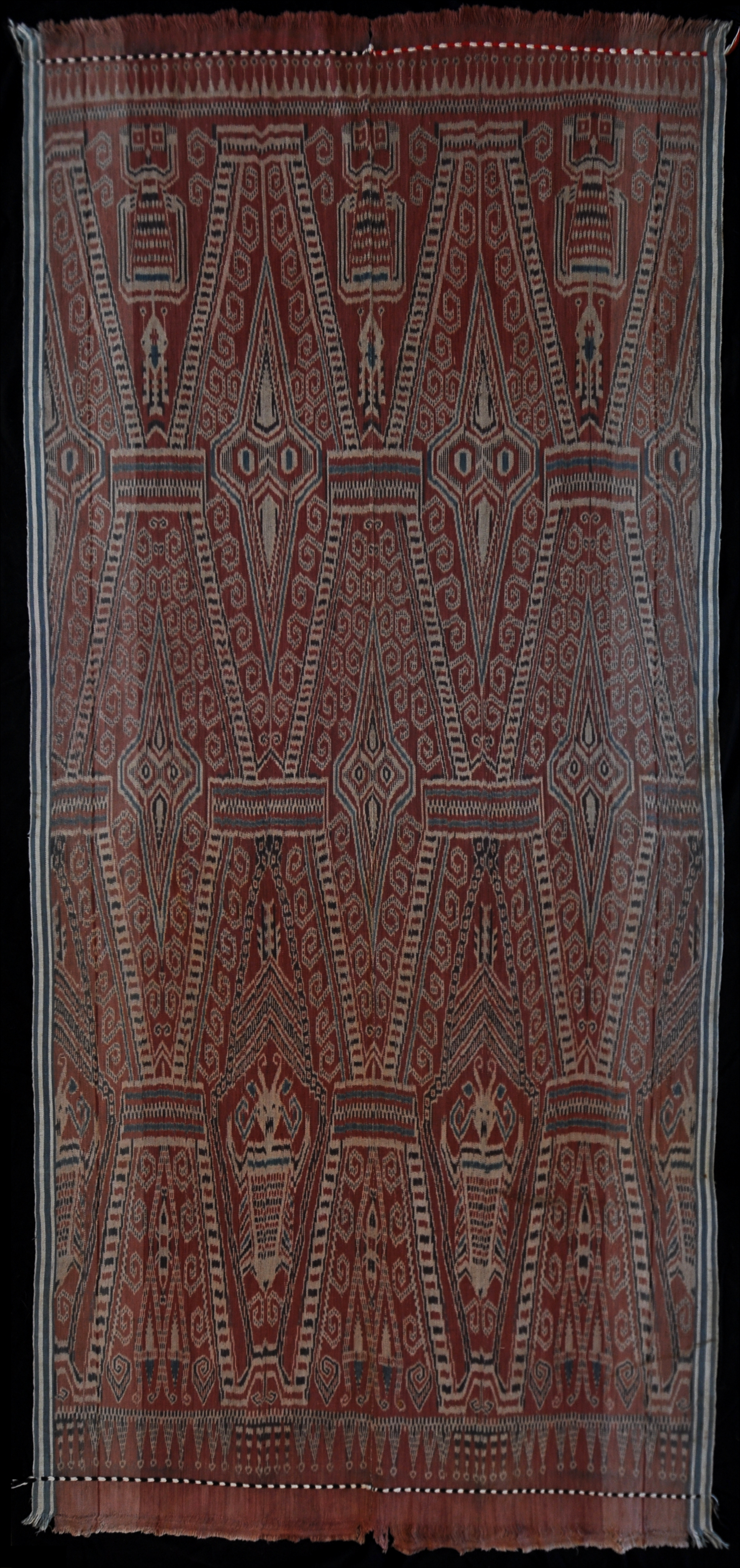| |
 mouse over to magnify mouse over to magnify
| | | | 202 Borneo, Sarawak
Pua kumbu
| | Locale: | Katibas river and its tributaries, Sarawak's old 7th division. | | Period: | 1940-1950 (?) | | Panels: | 2 | | Design: | Field divided into elongated diamonds, four showing humanoid figures with feather headdresses in their entirety, flanked by two half diamonds with the same pattern; three triangular fields on opposite site with smaller humanoid figures, equally with feather headdresses; four diamonds with inner diamonds, 'eyes' and hooks - the lang ngerembang or hawk motif also seen in Kantu cloths. The top two are flanked by two half diamonds of the same design. Probably the 'iron hook pattern', buah ginti sempetong. Borders in white and pale indigo, natural dyes. | | Size: | 110 x 241.5 cm (43.3 x 95 in) | | Weight: | 950 g (358 g/m2) | | Yarn: | Cotton, hand-spun, double-ply | | Comment: | Striking and unusual design. The angularity and the 'hawks', lang ngerembang, might suggest Kantu origins but the cloth's ample size and use of hand spun thread argue against this. Probably field-collected by Michael Palmieri. | | Background: | Additional information in chapters on Borneo and Sarawak. | | Sources: | Provenance comfirmed by field-collector and dealer Michael Palmieri, who collected a nearly identical pua on the Katibas river in the 1970s. Similar to pua with 'iron hook pattern' in Gavin, Iban Ritual Textiles. Similar to pua in Larsen, The Dyer's Art, p. 146a., unfortunately solely identified as 'Iban', without specific region. Similar are the overall patterning, the appearance of 'eyes', and the use of probably anthropomorphic, but in that example perhaps zoomorphic, motifs. The hawk eyes also are seen in a 19th C. kain kebat in Amann, Textiles from Borneo, Plate 72. There are other similarities as well, such as the hooks lining all the diagonals. Hawk motif also seen on Kantu kain kebat, Plate 86. Also shown in Gavin, 'The Women's Warpath', Fig. 77, identified as buah lang. | | |
 ©Peter ten Hoopen, 2025
All rights reserved.
|
|


